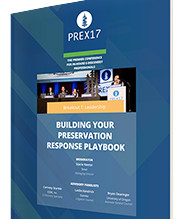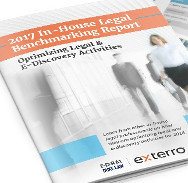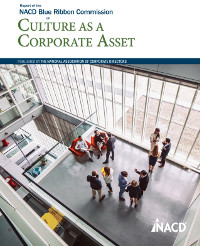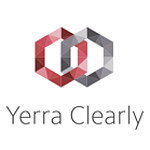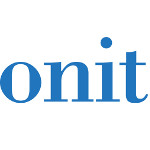 Onit will unveil its Contract Lifecycle Management (CLM) solution at the 2017 ACC Annual Meeting in Washington, DC,, Oct. 16-18.
Onit will unveil its Contract Lifecycle Management (CLM) solution at the 2017 ACC Annual Meeting in Washington, DC,, Oct. 16-18.
The company is offering 30-minute demonstrations to show how the new solution can manage the entire lifecycle of contracts — from origination to execution, storage, administration and renewal.
Some unique features include:
- A clause library with various clause-level controls to help drive workflow with the legal department
- Version control and negotiations management to allow multiple parties to manage versions during the redlining process
- Contract authoring functionality that gives users the ability to build custom contracts with clauses from a clause library
Simply fill out the form below and let us know when you can join us in our demo room on the exhibit floor.
We are also scheduling demos of our other offerings (ie. legal e-billing, matter management, legal holds, legal service requests, NDA management, etc).
var gform;gform||(document.addEventListener("gform_main_scripts_loaded",function(){gform.scriptsLoaded=!0}),window.addEventListener("DOMContentLoaded",function(){gform.domLoaded=!0}),gform={domLoaded:!1,scriptsLoaded:!1,initializeOnLoaded:function(o){gform.domLoaded&&gform.scriptsLoaded?o():!gform.domLoaded&&gform.scriptsLoaded?window.addEventListener("DOMContentLoaded",o):document.addEventListener("gform_main_scripts_loaded",o)},hooks:{action:{},filter:{}},addAction:function(o,n,r,t){gform.addHook("action",o,n,r,t)},addFilter:function(o,n,r,t){gform.addHook("filter",o,n,r,t)},doAction:function(o){gform.doHook("action",o,arguments)},applyFilters:function(o){return gform.doHook("filter",o,arguments)},removeAction:function(o,n){gform.removeHook("action",o,n)},removeFilter:function(o,n,r){gform.removeHook("filter",o,n,r)},addHook:function(o,n,r,t,i){null==gform.hooks[o][n]&&(gform.hooks[o][n]=[]);var e=gform.hooks[o][n];null==i&&(i=n+"_"+e.length),gform.hooks[o][n].push({tag:i,callable:r,priority:t=null==t?10:t})},doHook:function(n,o,r){var t;if(r=Array.prototype.slice.call(r,1),null!=gform.hooks[n][o]&&((o=gform.hooks[n][o]).sort(function(o,n){return o.priority-n.priority}),o.forEach(function(o){"function"!=typeof(t=o.callable)&&(t=window[t]),"action"==n?t.apply(null,r):r[0]=t.apply(null,r)})),"filter"==n)return r[0]},removeHook:function(o,n,t,i){var r;null!=gform.hooks[o][n]&&(r=(r=gform.hooks[o][n]).filter(function(o,n,r){return!!(null!=i&&i!=o.tag||null!=t&&t!=o.priority)}),gform.hooks[o][n]=r)}});
/* = 0;if(!is_postback){return;}var form_content = jQuery(this).contents().find('#gform_wrapper_37');var is_confirmation = jQuery(this).contents().find('#gform_confirmation_wrapper_37').length > 0;var is_redirect = contents.indexOf('gformRedirect(){') >= 0;var is_form = form_content.length > 0 && ! is_redirect && ! is_confirmation;var mt = parseInt(jQuery('html').css('margin-top'), 10) + parseInt(jQuery('body').css('margin-top'), 10) + 100;if(is_form){jQuery('#gform_wrapper_37').html(form_content.html());if(form_content.hasClass('gform_validation_error')){jQuery('#gform_wrapper_37').addClass('gform_validation_error');} else {jQuery('#gform_wrapper_37').removeClass('gform_validation_error');}setTimeout( function() { /* delay the scroll by 50 milliseconds to fix a bug in chrome */ jQuery(document).scrollTop(jQuery('#gform_wrapper_37').offset().top - mt); }, 50 );if(window['gformInitDatepicker']) {gformInitDatepicker();}if(window['gformInitPriceFields']) {gformInitPriceFields();}var current_page = jQuery('#gform_source_page_number_37').val();gformInitSpinner( 37, 'https://generalcounselnews.com/wp-content/plugins/gravityforms/images/spinner.svg', true );jQuery(document).trigger('gform_page_loaded', [37, current_page]);window['gf_submitting_37'] = false;}else if(!is_redirect){var confirmation_content = jQuery(this).contents().find('.GF_AJAX_POSTBACK').html();if(!confirmation_content){confirmation_content = contents;}setTimeout(function(){jQuery('#gform_wrapper_37').replaceWith(confirmation_content);jQuery(document).scrollTop(jQuery('#gf_37').offset().top - mt);jQuery(document).trigger('gform_confirmation_loaded', [37]);window['gf_submitting_37'] = false;wp.a11y.speak(jQuery('#gform_confirmation_message_37').text());}, 50);}else{jQuery('#gform_37').append(contents);if(window['gformRedirect']) {gformRedirect();}}jQuery(document).trigger('gform_post_render', [37, current_page]);gform.utils.trigger({ event: 'gform/postRender', native: false, data: { formId: 37, currentPage: current_page } });} );} );
/* ]]> */
Download our whitepaper “Simple Contract Management” (direct PDF download) to learn more.
 The National Association of Corporate Directors has published a complimentary article titled “Assessing the Ability to Change Culture,” providing a quick overview of best practices set forth in the Report of the NACD Blue Ribbon Commission on Culture as a Corporate Asset.
The National Association of Corporate Directors has published a complimentary article titled “Assessing the Ability to Change Culture,” providing a quick overview of best practices set forth in the Report of the NACD Blue Ribbon Commission on Culture as a Corporate Asset.

